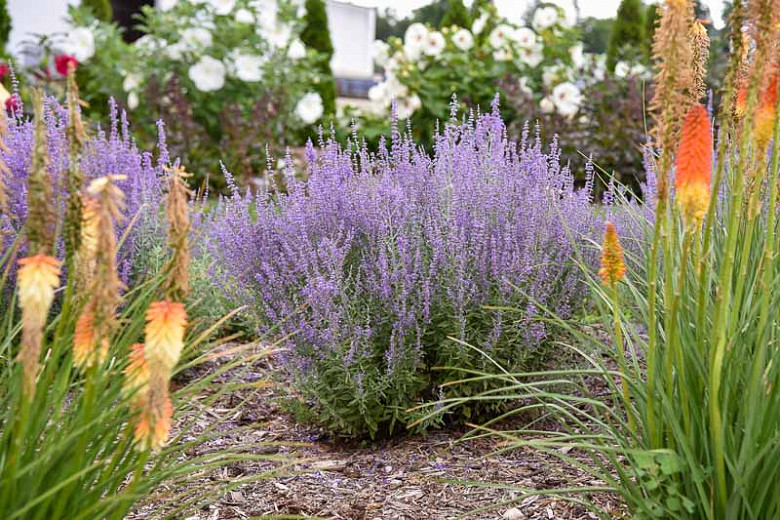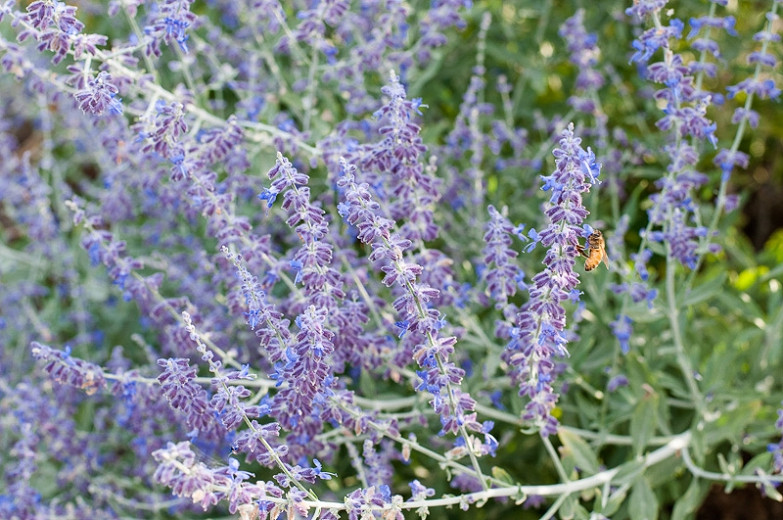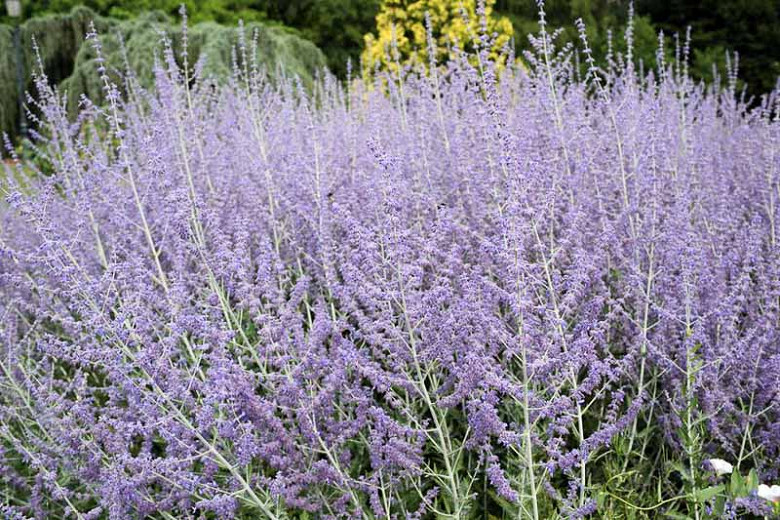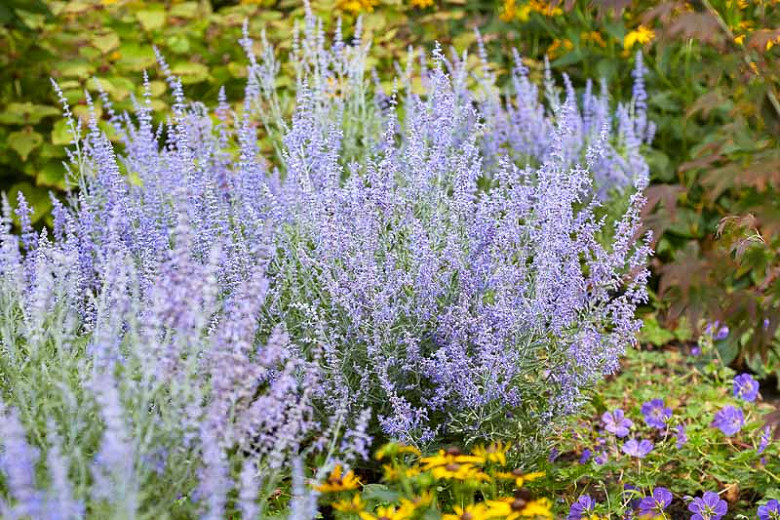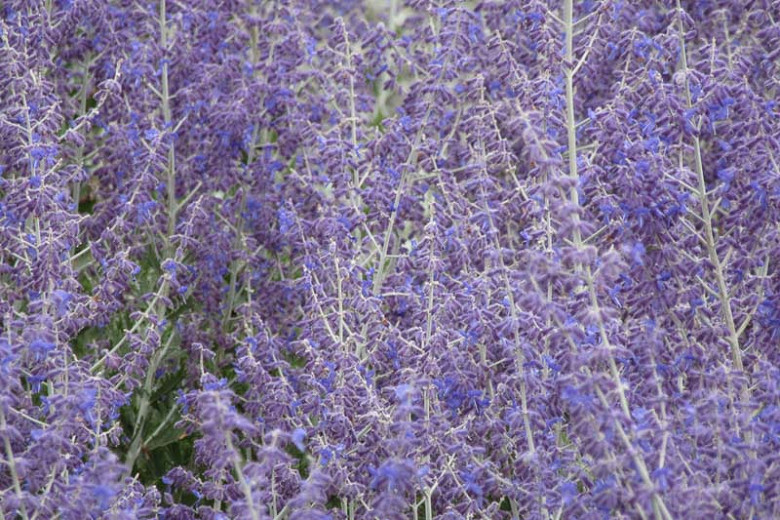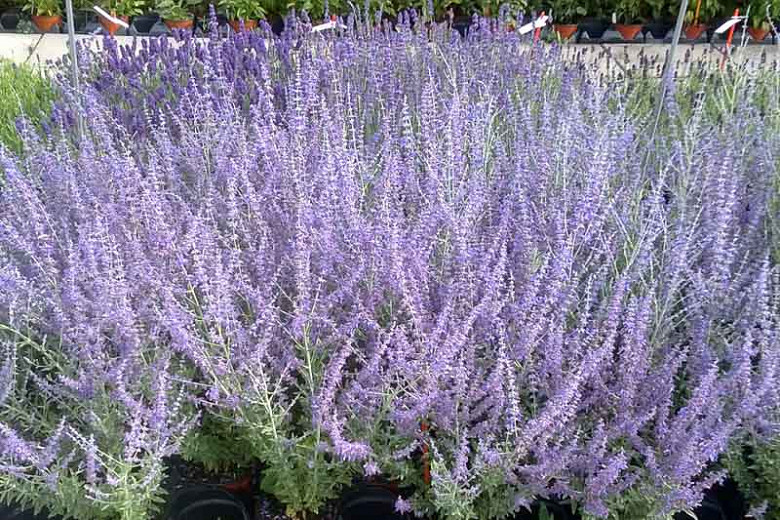Perovskia atriplicifolia Blue Jean Baby (Russian Sage)
One of the earliest Russian Sage to bloom, Perovskia atriplicifolia 'Blue Jean Baby' (Russian Sage) is an erect, multi-stemmed sub-shrub or deciduous perennial with strong stems bearing lavender-blue flowers held in smoky purple calyxes. Blooming for weeks from mid-summer to fall, the colorful calyxes extend the season of interest of this vigorous Russian Sage selection past its peak blooming time. Attractive to pollinating bees and hummingbirds, the blossoms are borne on thin white stems clad with aromatic leaves. Adding long-lasting color to the landscape, this delicate-looking plant is a toughy that is resistant to drought, heat and poor soils. Because of its aromatic foliage and woody stems, few pests, including deer, ever bother it. A perfect perennial for hot, dry climates that is also exceptionally cold hardy. Pretty and excellent for xeriscaping, its long blooming season makes it an extremely valuable addition to the garden – even in winter when the stems create a beautiful feature in the landscape.
- Typically grows up to 28-34 in. tall (70-85 cm) and 36 in. wide (90 cm).
- Performs best in full sun, in average, dry to medium, well-drained soils.
- Virtually pest and disease free. Drought and salt tolerant, deer and rabbit resistant.
- Attracts scores of butterflies and hummingbirds
- Russian Sage looks stunning in dry landscapes with other desert plants, in cottage or Mediterranean gardens, whether planted as singles or in clusters to intensify its presence, or even in a linear mass for knot gardens or small divider hedges. It associates wonderfully with other gray-leaved plants such as Lavender and contrasts beautifully with the bright colors of Echinacea (Coneflower), Helenium (Sneezeweed) and clump-forming grasses.
- Cut back plants almost to the ground in late winter to early spring as soon as new growth appears.
- Propagate by softwood cuttings in late spring or semi-ripe cuttings in summer
- Perovskia atriplicifolia is native to Central Asia (Afghanistan, Pakistan, etc.) and Tibet at elevations to 8,000 ft.
Requirements
| Hardiness | 4 – 9 |
|---|---|
| Heat Zones | 6 – 9 |
| Climate Zones | 2, 2A, 2B, 3, 3A, 3B, 4, 5, 6, 7, 8, 9, 10, 11, 12, 13, 14, 15, 16, 17, 18, 19, 20, 21, 22, 23, 24 |
| Plant Type | Perennials, Shrubs |
| Plant Family | Perovskia – Russian Sages |
| Exposure | Full Sun |
| Season of Interest | Summer (Mid,Late)Fall |
| Height | 2' – 3' (60cm – 90cm) |
| Spread | 2' – 3' (60cm – 90cm) |
| Spacing | 36″ (90cm) |
| Water Needs | Low |
| Maintenance | Low |
| Soil Type | Chalk, Loam, Sand |
| Soil pH | Acid, Alkaline, Neutral |
| Soil Drainage | Well-Drained |
| Characteristics | Cut Flowers, Fragrant, Showy |
| Tolerance | Deer, Drought, Rabbit, Dry Soil, Salt |
| Attracts | Bees, Butterflies, Hummingbirds |
| Garden Uses | Beds and Borders |
| Garden Styles | City and Courtyard, Gravel and Rock Garden, Informal and Cottage, Mediterranean Garden |

